Pelargonium zonal: varieties, planting rules and care features

Zonal pelargonium is an elegant ornamental plant that is very popular in indoor floriculture. It is customary to refer to its main advantages as unpretentiousness, as well as the ability to bloom luxuriously a significant part of the year. What are the nuances associated with the cultivation of zonal pelargoniums? What conditions do these plants need for a comfortable existence?
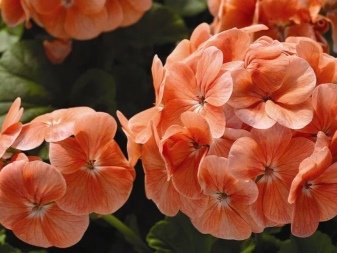
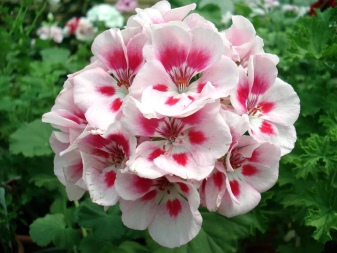
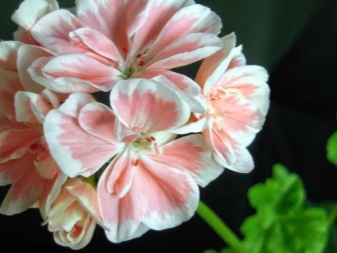
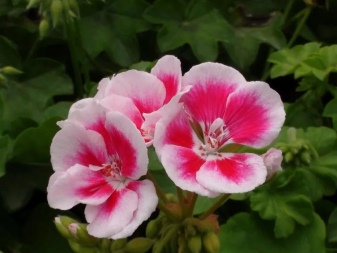
Description
To begin with, it should be noted that zonal pelargonium is mistakenly called geranium by many growers. In fact, a group of plants under this name belongs to a separate genus Pelargonium, which, in turn, belongs to the Geranium family. Another independent genus belongs to the same family - Geranium (Zhuravelnik), which has about 400 varieties of dwarf shrubs and shrubs, visually little similar to the well-known indoor pelargonium. However, disregarding this fact, most flower growers still call the zonal pelargonium "geranium", considering this name to be simpler and more convenient.
Zonal pelargonium is an extensive group of perennial dwarf shrubs, the trunks of which become woody with age and are covered with a rough beige-brown bark. Depending on the varietal characteristics of the plant, its height can reach 15 centimeters (miniature varieties) and one and a half meters.
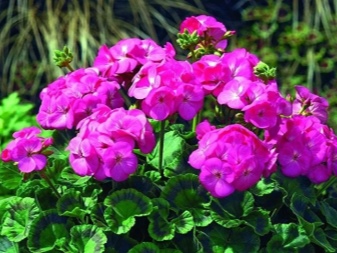

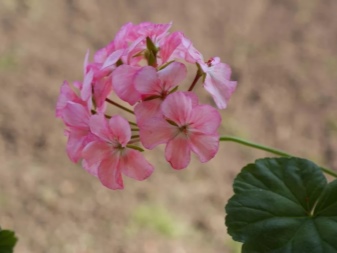
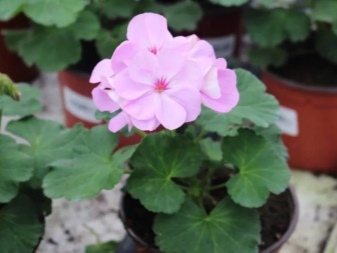
Most indoor and garden pelargoniums have an erect trunk, branched and strong shoots. Varietal groups are also known, representatives of which have creeping shoots and are grown as ampelous plants.
The leaves of the zonal pelargonium have a regular rounded shape, slightly dissected and wavy edges. A characteristic feature of the color of the leaves is the presence of a zone of dark brown, yellowish or dark green tint on the leaf blade. The saturation of the pattern on the leaf plates depends on the varietal characteristics of the plant, as well as on its keeping conditions.
It was noticed that in pelargoniums experiencing a lack of illumination, the area colored with a different color fades and is compared in shade with the rest of the leaf plate.
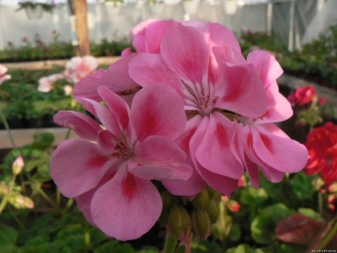
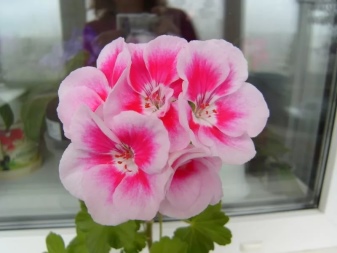
To date, breeders have bred pelargonium varieties with simple, semi-double and double flowers. The palette of their colors is unusually wide and varied. Depending on the variety, the color of pelargonium flowers can be two-color or monochromatic (milky white, pale or deep pink, coral, orange, peach, carmine red, dark ruby). There are even varieties with flowers of a unique lilac-amethyst color ("Blue blood").
One of the striking features of zonal pelargoniums is their specific tart aroma. It is noteworthy that most of these plants smell not only of leaves, but also flowers. Some varieties of pelargonium have pleasant fruity and herbaceous aromas.
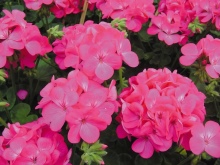
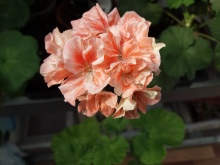
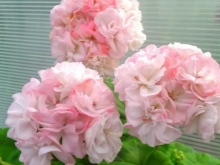
Varieties
According to historical sources, the described plant entered floriculture at the beginning of the 18th century. For several centuries, breeders have managed to bring out over 10 thousand varieties of pelargoniums of various colors and shapes. Below are the most popular variety names that can be a worthy decoration for any home or garden.
- "Yu-Jiga" Is a very attractive standard variety, appreciated for its amazing decorative effect.The plant has an erect stem, forms a beautiful compact bush. Flowers - densely double, pink-shaped, rich coral-pink color.


- "Lake" - an unpretentious variety, characterized by abundant and lush flowering. The plant has a small size, rounded juicy green leaves with a dark brown circular zone in the center. Forms numerous peduncles with spherical inflorescences. Flowers are double, salmon-orange in color.


- "Raphaela F1" - a variety of modern selection that forms beautiful and compact bushes up to 30 centimeters high. During the flowering period, forms numerous spherical inflorescences. Flowers - double, with petals tightly adjacent to each other. The color range of this variety includes milky white, peach pink, bright orange, purple and scarlet shades.
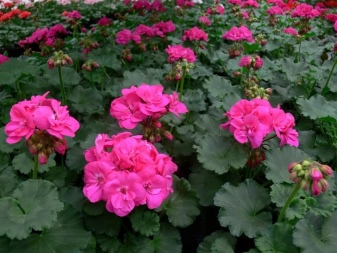
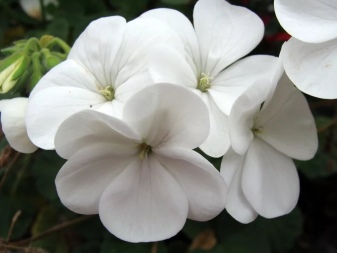
- "Bold Gold" Is a very effective and abundantly flowering variety, recommended for growing both at home and in the open field. The plant has strong branching stems and light green leaves with a wide brown ring in the center. Flowers are densely doubled, united in dense spherical inflorescences. The color of the petals ranges from orange-peach to salmon-pink.
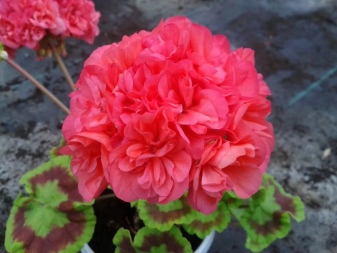
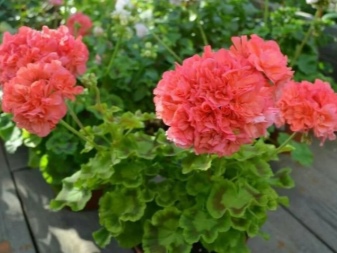
- "Minx" - an original miniature variety, valued for its spectacular and abundant flowering. The color of large double flowers is carmine red, contrasting well with the rich emerald shade of the foliage.
According to the testimonials of flower growers, pelargoniums of this variety independently form a compact bush, without requiring pinching or pruning of shoots.
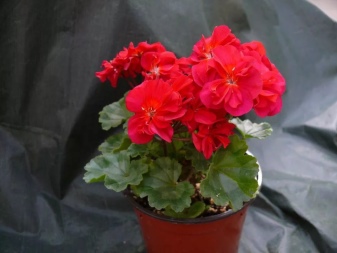
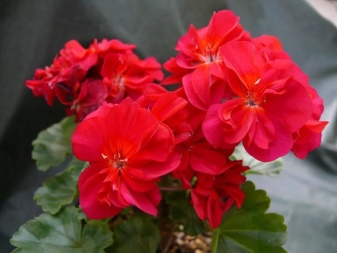
- "Ainsdale Duke" Is a standard variety with an unusually lush flowering. The plant forms a neat, upright bush with branching shoots that require light pinching. The flowers are very large, united in dense spherical inflorescences, with a deep red hue.

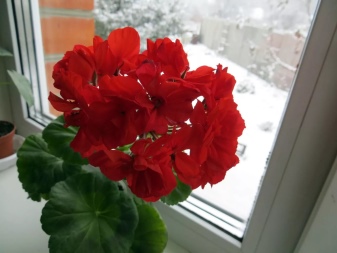
- "Colorama" - standard unpretentious variety, suitable for growing in open field conditions. The plant has well-developed and branching shoots, light emerald leaves with a wide dark brown ring in the center. The flowers are semi-double, united in dense spherical inflorescences. The color of the flowers can be milky white, pink-purple, deep red, peach.
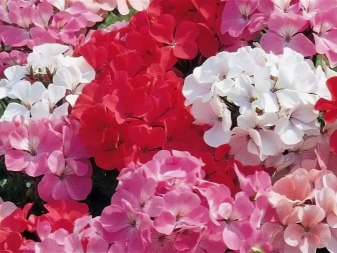
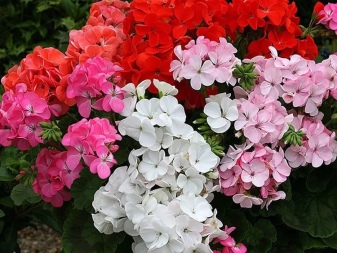
- "Quantum light pink" - a very original variety, notable for its unusual appearance. The plant forms a compact shrub about 30 centimeters high, covered with intricate palm foliage. The flowers have a fancy star-shaped shape, which is given to them by pointed, elongated petals. The color of the flowers is pale pink, slightly fading towards the center.
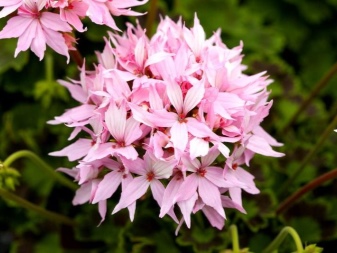
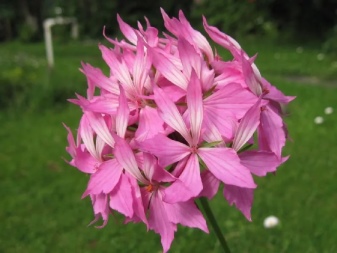
- "Grand Canyon" Is a luxurious variety that forms lush globular inflorescences with a diameter of about 12 centimeters. The plant is compact, forms a neat erect bush up to 30-35 centimeters high. The flowers are salmon pink in color, semi-double, dense and dense.
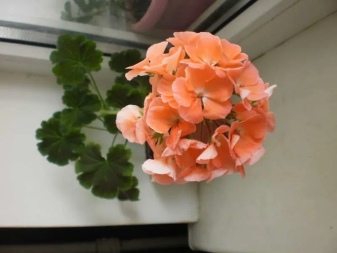

- "Mix" - an interesting variety that differs from traditional varieties with an unusual color of foliage. Plants of this variety have beautiful rounded leaves, colored in the central part in a chocolate brown color, smoothly turning into a green edging around the edges. The color of the flowers is presented mainly in light shades, contrasting with the color of the foliage.
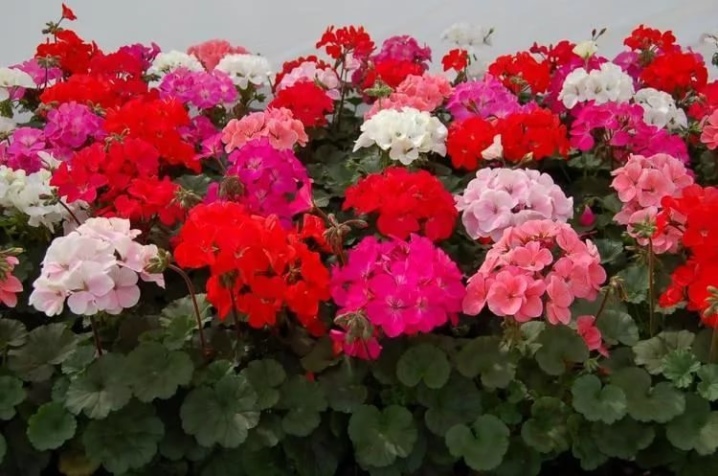
- "Mrs. Pollock " Is a delightful variegated variety that looks impressive even without flowering. The color of the leaves is represented by a mint-green spot in the central part, a wide brown-burgundy annular zone and a light beige edging along the edges. The plant forms simple, but numerous flowers of a carmine-red color, collected in voluminous inflorescences.
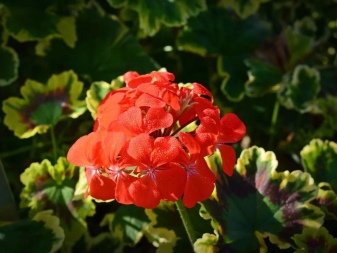
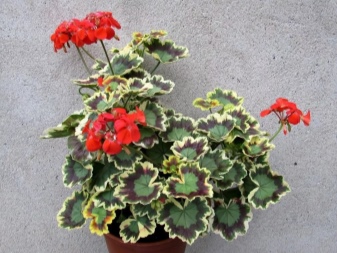
- "Mirka" - a variety of zonal pelargonium, valued for large (up to 15 centimeters in diameter) spherical scarlet inflorescences. Flowers are simple, united in caps on long peduncles.The bush is compact, reaching a height of about 35 centimeters. The leaves are emerald green, with a pronounced brownish-brown annular zone in the center.

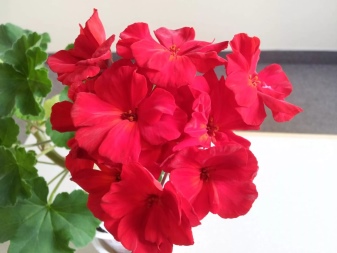
- "Cabaret" - a popular unpretentious variety, characterized by rather large (12-15 centimeters in diameter) and voluminous inflorescences. The flowers are simple and semi-double, tightly adjacent to each other. The palette of colors includes milky white, coral pink, peach orange, ruby red shades. Plants form beautiful low bushes about 30 centimeters high.
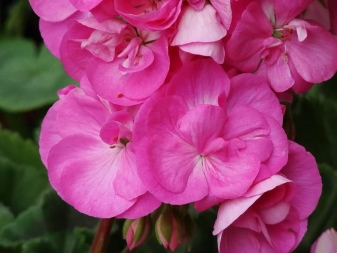
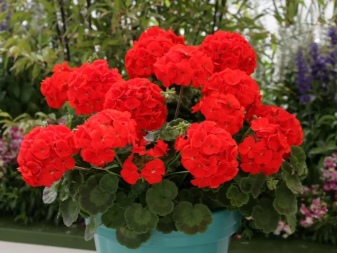
- "Quantum Salmon" - an unusually spectacular variety of zonal pelargonium, valued for its abundant and long flowering, original appearance. The plant has dense, finger-like foliage of dark emerald color with a pronounced brown annular zone in the center. Flowers - star-shaped, numerous, in close contact with each other. The color of the flowers is salmon pink, slightly fading at the edges of the petals.
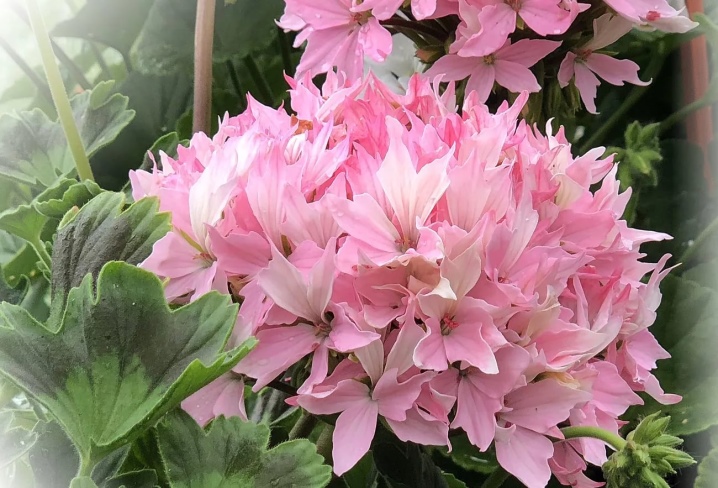
Landing features
Zonal pelargoniums are flowering plants grown indoors as perennials. They are usually grown outdoors as an annual ornamental crop. Being quite unpretentious plants, resistant to unfavorable environmental factors, pelargoniums feel good outdoors, where they are grown in flower beds, in flower beds, in portable containers and flowerpots.
One of the important aspects in growing these flowers at home and outdoors is the correct planting. When performing this procedure, you must pay attention to such requirements as:
- optimal soil composition;
- suitable container (when planting in a pot);
- the right choice of place (when landing in open ground);
- correct planting technique.
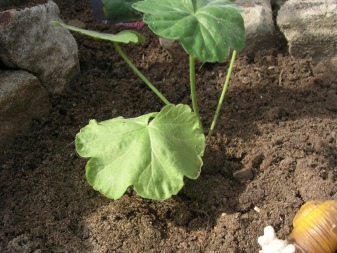
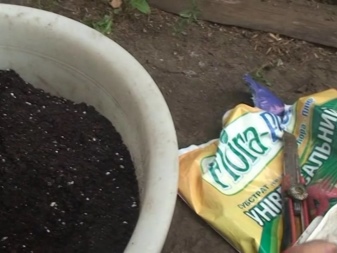
Pelargoniums are considered plants that do not impose special requirements on the composition of the soil. However, marginal soils are not able to provide them with sufficient potential for growth, development and long-term flowering. Given this circumstance, when planting zonal pelargoniums, it is advisable to use soil that includes such components as:
- turf and leafy land;
- humus;
- peat.
In order to improve the moisture and air permeability of the soil, it is recommended to add a little sand to it. It is important to ensure that it is clean and free of clay impurities.
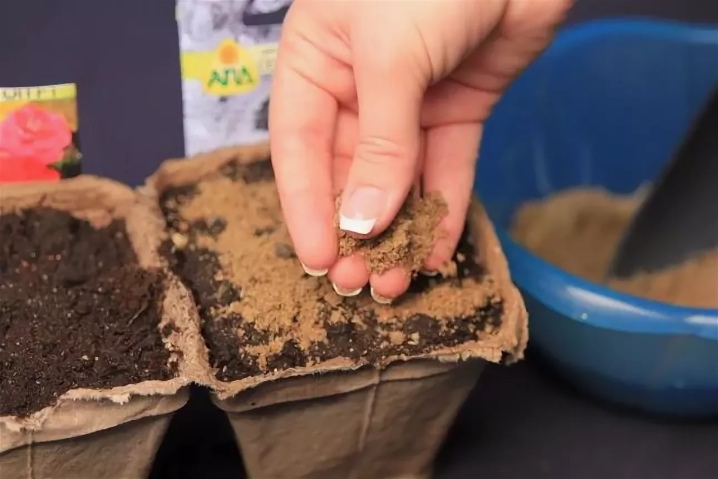
When planting pelargonium in a pot, it is necessary to put it on the bottom of the container in advance drainage layer. Small stones, crushed expanded clay, river pebbles can be used as drainage elements.
According to experienced growers, the best planting capacity for pelargoniums is a ceramic pot. The ceramic container protects the roots from overheating, making the plant feel good even in very hot weather.
It is allowed to use plastic pots for planting pelargoniums. Plastic is a fairly hygienic and inexpensive material that can be used for many years. However, the disadvantage of plastic containers is that the soil dries out rather quickly in them.
The size of the planting container depends on the diameter of the root ball of the plants. Plant breeders say that even for adult pelargonium, a pot is optimal, whose diameter does not exceed 15 centimeters, and the height is 12-15 centimeters.
In addition, when choosing a pot of a suitable size, it must be borne in mind that the planted plant will bloom only when its roots fill the entire space of the container. For this reason, it is undesirable to purchase too large pots.
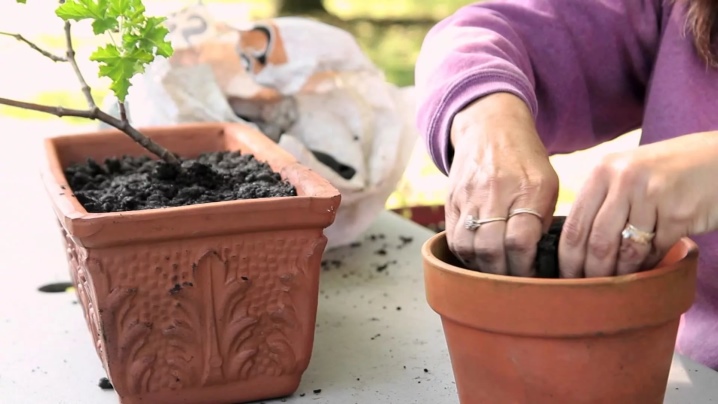
When planting zonal pelargonium in open ground, attention must be paid to choosing a suitable place. This should be an area in light partial shade with loose and well-drained soil.
It is not allowed to plant these plants in swampy areas with soil that is poorly permeable to moisture. Flowers planted in these places are most likely to suffer from root decay and die.
You should proceed to planting plants in open ground only after the threat of frost has passed. June is considered the best month for this procedure.
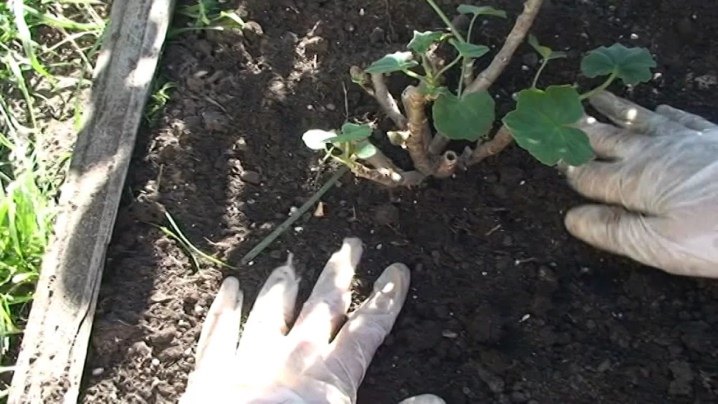
Planting and transplanting of zonal pelargoniums should be carried out by the transshipment method, which involves placing plants in planting pits along with a lump of earth on the roots. This method is considered the most gentle and least traumatic, due to which the planted flowers quickly take root in a new place.
After the procedure, it is necessary to water the planted plants well. In hot and excessively sunny weather, Pelargonium is strongly recommended to be shaded.
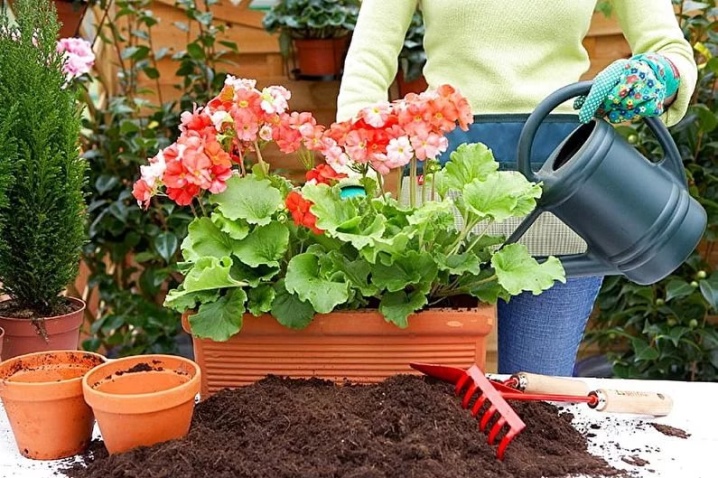
Care rules
Caring for zonal pelargonium at home is easy, since these plants are particularly unpretentious. They can easily tolerate both light partial shade and bright sun. However, they should still be protected from direct sunlight so that the flowers do not get burned.
Experienced growers claim that zoned pelargoniums more easily tolerate minor droughts than repeated and haphazard irrigations... Waterlogging of soil mixture in a pot is destructive for them, therefore watering of these plants should be moderate.
Flowering specimens should be fed with complex fertilizers about once a month. This procedure will prolong flowering and prevent the depletion of plant resources.
It is also important to promptly remove faded and dried umbrellas during flowering.
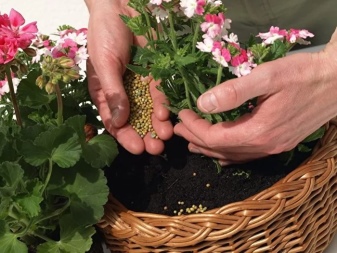

If the varietal characteristics of pelargonium provide for its tendency to grow, it is necessary to periodically form the plant. So, in order to get a compact, low and symmetrical bush, you need to pinch the tops of the stems when planting.
When growing pelargonium outdoors, it is necessary to provide them with protection from the rain. These unassuming perennials painfully tolerate excess moisture in the air and in the soil. For the same reason, they do not need spraying and irrigation.
Reproduction methods
Most often, flower growers use seeds and cuttings for propagation of zonal pelargoniums. Seed propagation is considered more laborious and ineffective. Cutting is the optimal breeding method for these plants and almost always gives excellent results.
To obtain pelargonium from seeds, good quality store planting material is used. Home-grown seeds rarely live up to the expectations of growers.
Sowing seeds is carried out in trays filled with a loose soil mixture with the addition of sand. After sowing, the surface of the earth is thoroughly sprayed and the tray is covered with plastic wrap. Spraying before sprouting is carried out regularly, preventing the soil from drying out.
If all sowing rules are followed, seedlings usually appear after 2-3 weeks.
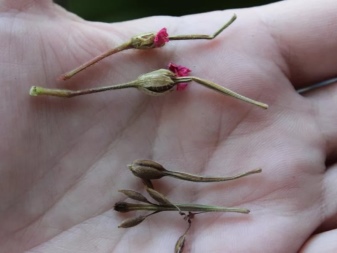
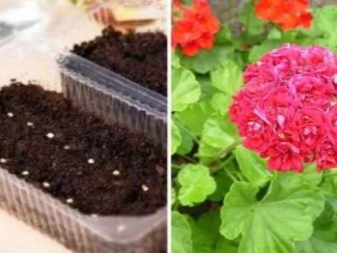
The easiest way to propagate pelargonium is by rooting cuttings. They can be rooted both in water and in a loose and moist substrate. The fact that the stalk has managed to develop a sufficient root mass is evidenced by the appearance of new young leaves on it. Planting cuttings with roots is carried out in the usual way.
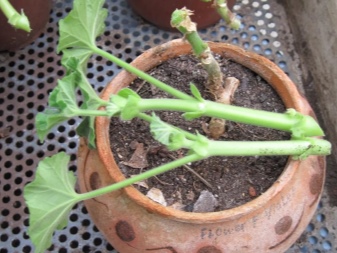
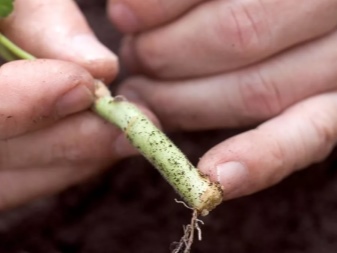
Diseases and pests
Subject to the rules of care, zonal pelargoniums are practically not damaged by pests and rarely suffer from diseases. One of the most common diseases they have is root rotwhich develops when the soil is swamped in a pot. In this case, the affected plant must be carefully removed from the pot and its roots (root collar) must be treated with the preparation "Hom" or "Fundazol".
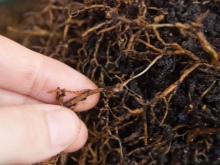
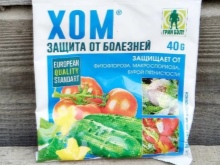
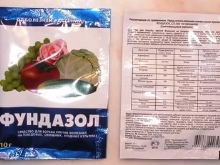
Moist soil also creates attractive breeding conditions. root worm - a pest that destroys the root system of plants. In this situation, the pelargonium must also be removed from the pot.After that, you should remove the affected roots with a sharp blade, and then sprinkle the cut sites on the healthy remnants of the roots with activated carbon powder. In cases of severe damage, the plant must be treated with the drug Aktara or Aktellik.
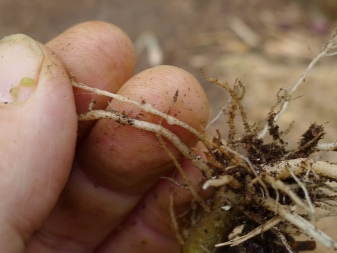
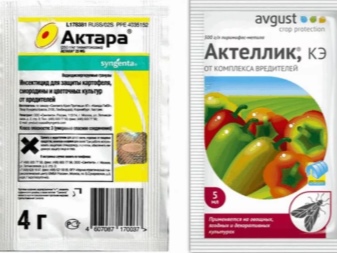
Another dangerous pest that often infects zonal pelargoniums is whitefly. You can find these small gray-white butterflies on the inside of the leaves. To destroy these parasites, the drug is also used "Aktara" - a highly effective insecticide against known pests of indoor plants.

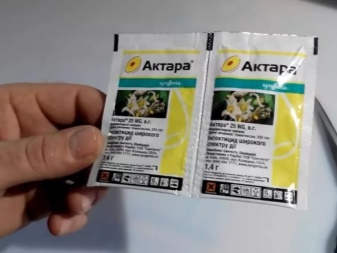
The most effective measure for the prevention of diseases and the appearance of pests is to follow the recommendations for caring for pelargoniums. This implies not only the creation of optimal conditions for keeping these perennials, but also their regular thorough examination, assessment of the general condition and appearance.
How to grow pelargonium from seeds, see below.































The comment was sent successfully.